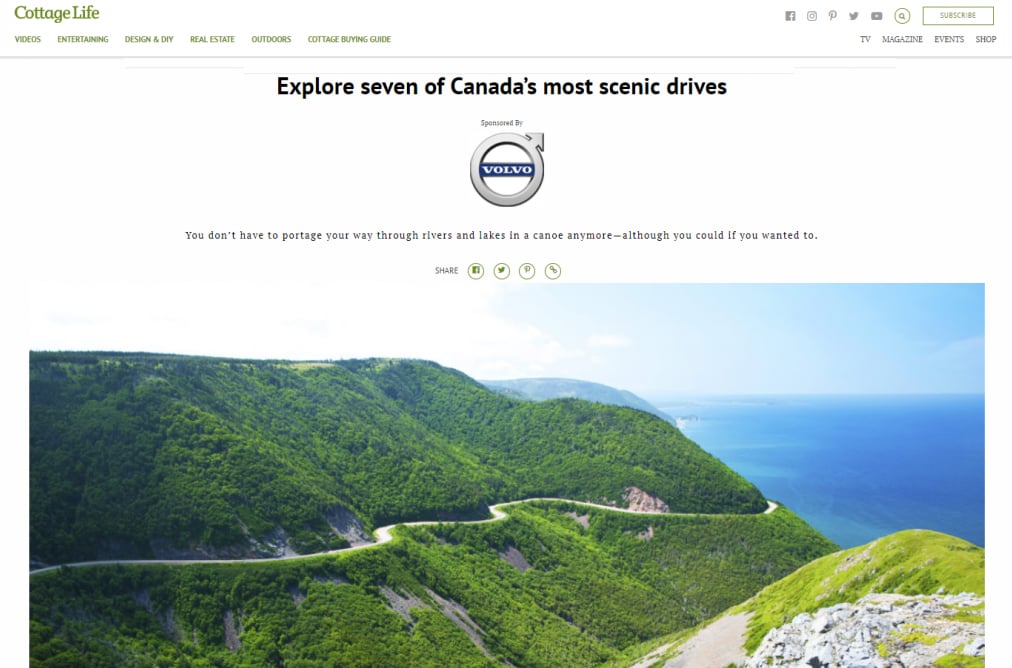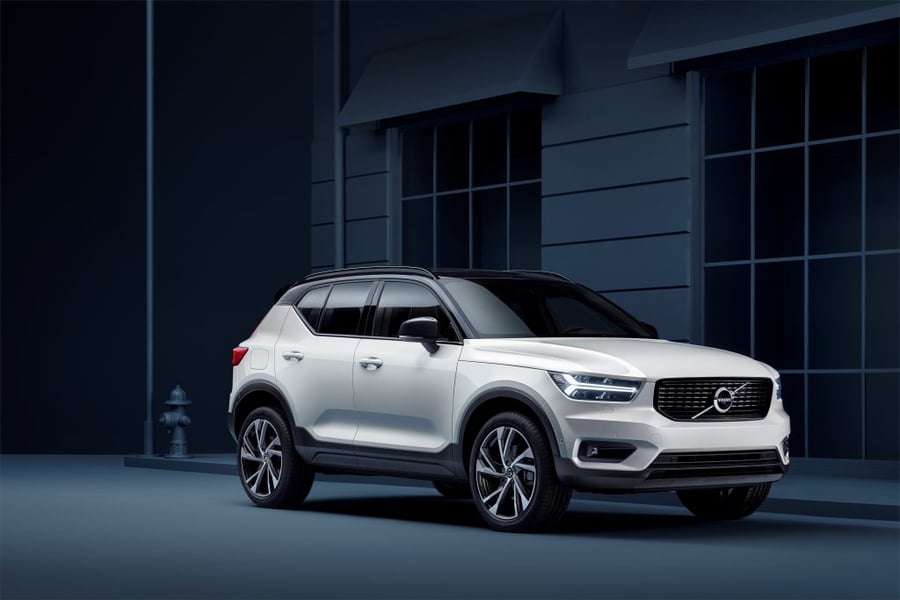
Volvo Creates Powerful “Moments” with Customers Through Content
Few industries are subject to the same level of scrutiny that customers bring to buying a new car.
After all, this is no casual purchase. Instead, the process of buying a vehicle is long and complex, filled with weeks’ and sometimes months’ worth of research. Factors influencing customer behavior range from safety certificates to style, making marketing to them an incredibly subjective art. Throw in stiff competition from rival brands and you’ve got one of the longest and most challenging sales funnels in business.
So how do you stand out to customers in such a competitive crowd? The answer, according to Volvo, is to build a connection with them.
It’s a difficult goal to achieve, but for Alexander Lvovich, Managing Director of Volvo Car Canada Ltd., it’s one that he knew his company had reached when their online content was driving people to tears — in the best possible way.
Instead of focusing purely on the vehicles themselves, Volvo wanted to connect with the people who drive them every day. They decided to eschew the traditional marketing model in favor of one that created characters who the audience actually cared about, showcasing the experience of driving a Volvo rather than the specific features the cars contain.
A fantastic example of this is a video called “Moments,” which they used to launch their XC60 model in 2017. In it, a mom reassures her daughter that her first day of school is going to go well, which inspires the girl to imagine everything her future holds.
“I can tell you to this day I have tears every time I watch it,” explained Lvovich. “We created this emotional story, and when you have this reaction, it triggers a discussion… I can’t tell you how many people approached me and discussed the piece and how it made them think about not just Volvo, but transportation and their families in general.”
By using their content to provoke an emotional reaction, Volvo turned their cars into a starting point for a discussion with their customers that went far beyond the benefits of their vehicles, yet still stayed true to the core value of the company: to protect peoples’ loved ones.
Customers need a reason why they’re driving a Volvo versus BMW, Mercedes, Audi or other brands.
We interviewed Lvovich to learn more about the importance of content and how the company is using it to create connections that help them punch above their weight in the automotive market.
Pressboard: Volvo operates in an extremely competitive market. How has that influenced your marketing?
Alexander Lvovich: Being one of the smallest players in the luxury automotive world, we need to adjust how we tell the story of Volvo’s people. The budgets are obviously smaller due to the size of the company, so we have to be more targeted.
Over the last few years we’ve invested quite a bit more in digital marketing. We focus on experiential marketing, and we’ve shifted our investments quite a bit away from what you’d call “traditional marketing,” where it’s hard to measure results. Instead, we’re trying to be more granular and more regionally focused. What we create is tailored to each individual market. And we’re seeing quite a bit of success, especially in the last couple of years.
Is that approach the same for your content, too?
Like the rest of our marketing, I think content has to be adapted to different parts of Canada on one hand, and different channels on the other. We also cater to what kind of customer we’re talking to. You have your wealthy consumer who knows more about the local brand, and you want to tell them about the new technology and what’s different from how things have been done in the past. And you have first-time buyers, with whom you want to share the excitement of the Volvo brand and all its innovations. And then you have people that are switching from other brands, where you want to differentiate yourself from the competition.

Volvo Canada used Pressboard to place unique content on four publications for their campaign promoting the XC60.
You need to make sure you have a critical volume of content so that you can adjust the content to each specific audience and different channels that you’re talking through. So that’s pretty much it: adjust the content to each specific audience, different channels, and tell people the story that they may have not known about Volvo, but is relevant to their lives.
You mentioned the word “story” there. Is that idea of storytelling a key part of Volvo’s strategy?
Storytelling is relevant, especially in this luxury segment because there are many people shopping in the luxury arena and they want to be special. They need a reason why they’re driving a Volvo versus BMW, Mercedes, Audi or other brands. So, we need to tell them why this vehicle is so special and what kind of message you send when you are seen driving it.
We found that the articles comparing us to our competition created significant reaction and engagement, especially on social channels. And it sparked very interesting conversation. It highlighted our awards, which we’re super proud of. We won the North American Truck of the Year two out of the last three years. I don’t think anybody has ever done that in history. And we won the European Car of the Year just a few weeks ago with XC40.

Volvo XC40.
So you have your traditional ways of getting your message out and putting your dollars behind it, or you can use third-party endorsement through articles and content and then promote that coverage — that way you’re not forcing your customer into a sales funnel. Instead of giving them a hard sell on a vehicle, they can look at how awesome it is, what kind of features it has and most importantly, connect with the kind of spirit and message it brings to the market.
That sense of connection is hugely important to Volvo, isn’t it?
I think from our standpoint, when you create a story that connects people to more than just Volvo — it connects them to their life — that story stays in their mind. Then hopefully when the time comes to look at and choose a vehicle, they will have the same memories in their minds.
That’s what lead us to create “Moments.” We were trying to create an emotional reaction that gets people thinking about their life and how Volvo can help them achieve things in their lives. It was very important to have a deep connection there, especially with those in the market for cars at a time of year when they’re already thinking about their kids and their safety.
We created this emotional story, and when you have this reaction, it triggers a discussion.
For us, the reason we felt that we were able to tell this story was because that’s a big part of Volvo. This is how we build our platforms, this is how we build our lineup, because that’s our core: to make sure we protect everybody, and we protect your loved ones.
Is there a brand that inspires you, or someone that you think is doing content really well?
I’m certainly inspired by Nike’s “Breaking2.” Nike set up this race where three marathon runners were trying to break the two-hour record. The record I think is two hours and a few minutes, and they were trying to get under two hours.
To see the runners and one of the most recognized track and field athletes in the world try to do the impossible… Nike integrated themselves very nicely into the piece, and it really highlighted the whole experience and the sportsmanship and drive of the athletes. It made the brand even more exciting for me.
Get your Content Marketing Fix
Sign up to receive tips on storytelling and much more.
We promise to respect your inbox.


